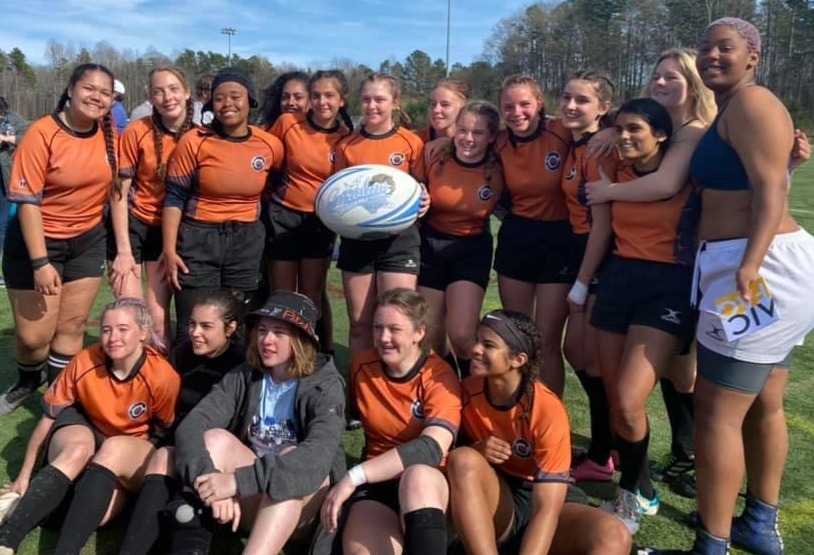
All photos courtesy CJRA
The Charlotte Junior Rugby Association (CJRA) formed 11 years ago, and today the North Carolina organization runs 28 teams for approximately 2,000 kids in grades 2-12. There are co-ed tackle programs for U10s through middle school, and multiple single-school and club sides for boys’ and girls’ high schoolers. CJRA is home to a highly successful boys’ high school club team, the Tigers, and its counterpart, Tigress, is poised to make comparable gains in the girls’ game.
Tigress formed five years ago but was limited to 7s and didn’t play an official schedule. A concentrated effort to grow the girls’ game followed, and single-school teams at Hough, North Mecklenburg, Olympic and South Mecklenburg formed. They’re housed under the CJRA organizational umbrella. The Mid-South Independent Rugby League (MISRL) provided structure, and the North Carolina-South Carolina league grew from six teams in 2018 to 18 in 2020.
After finishing runner-up to Hough in the 2019 MISRL final, Tigress emerged as the team to beat in 2020. The team went 8-0 in the Western Conference and got its biggest push from South Greenville, which finished second in the pool. The duo was readying for the semifinal crossovers against Eastern Conference leaders Wando and Raleigh when Covid-19 intervened.
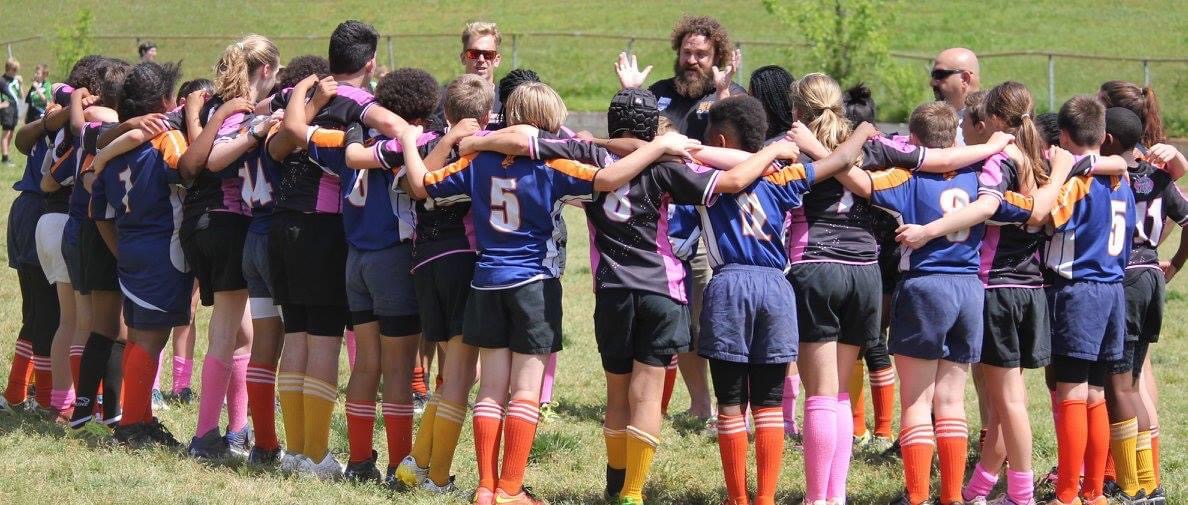
Co-ed middle school team from five years ago
“The ‘secret’ is that we have a really robust youth program,” CJRA Director of Rugby Erik Saxon explained the rise of Tigress. “When kids pick rugby as their number-one sport and they start young, all those things – ball skills, the laws, what the game is supposed to look like – everything becomes second nature. They’re not thinking about those things while playing and it makes for really beautiful rugby.”
As mentioned, the girls play tackle rugby with the boys from 2nd grade through 8th grade. That experience builds confidence and aggression in contact.
“I know that’s not unique to Charlotte but I know not everyone does that,” Saxon said of co-ed tackle. “Our girls’ middle school team hasn’t been beaten in six years, although that’s a bit of a misnomer. We’re pulling 12 girls from all of the co-ed middle school teams and entering them into tournaments when there’s an all-girls division. The level of play … our middle school girls are used to playing so hard and fast, and the traditional girls-only teams they face tend to be more timid and lose the contact area. We’ll run the whole bench and it’ll be 80-0 at halftime.”
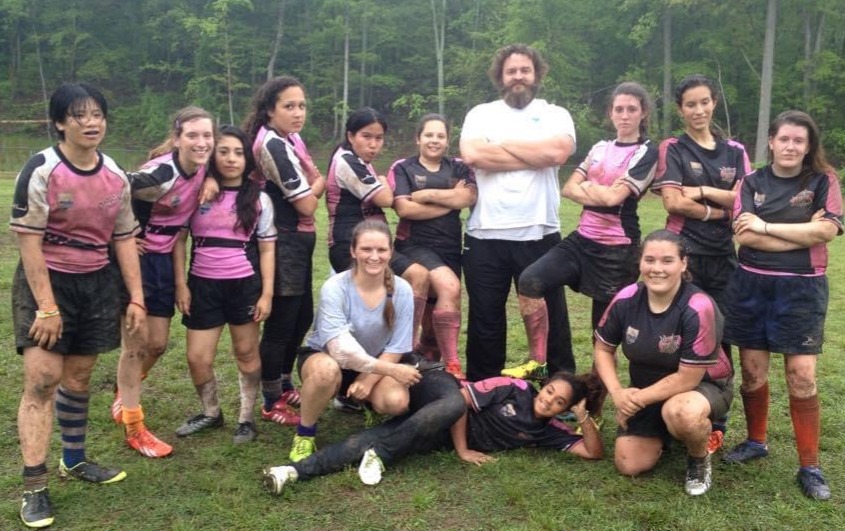
The first CJRA girls’ HS team in 2014-15 grew into 5 full teams and 140 players
Saxon noted that 60% of the membership returns each year, so there’s never a massive rebuilding season, and veterans can help coaches educate the newcomers. And then two years ago, a staffer suggested combining the Tigers and Tigress players and coaches on training days. The staff was split 50/50. There were concerns about discipline and awkwardness and contact, but Saxon – who ended up being the deciding vote – foresaw the benefits of maximizing resources.
“The way I write all of the lesson plans, we go through stations for the majority of practice. It’s 15 minutes at each station and we do team times and controlled scrimmages at the end,” Saxon explained. “Because of the stations, it ended up being a really good thing. They’re all on the field at the same time but not in the same drill.”
Coaches oversee a specific drill, one that addresses their specialty, whether that’s rucking or restarts or fitness, etc. The players – which are grouped into Boys A, Boys B, Girls A, Girls B – take consistent instruction, and that also helps players who are looking to move from the B to A side.
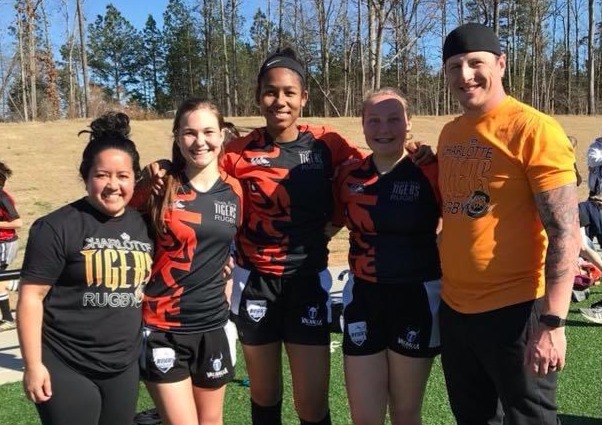
Coaches Alicia (far left) and Geoff (far right) Tice
“Our boys’ back coach is one of the best in the nation, and our girls’ forwards coach is one of best in country. Now, instead of knowledge limited to one team, that coach instructs four teams of kids, and they’re all getting the same instruction,” Saxon reiterated. “Game days are up to their individual coaches, but during practice, I have 12 coaches involved and they’re doing the thing they’re most comfortable with.”
On-field performances improved across the board, and the teams also bonded and started showing up to each other’s games for sideline support. They’re invested in each other’s successes.
Alicia Tice is the head coach of Tigress, and she’s assisted by husband Geoff, who also aids the Tigers B side. The team selected junior Emma Claire “EC” Cantrell as team captain, even though it typically elects a senior into this leadership position.
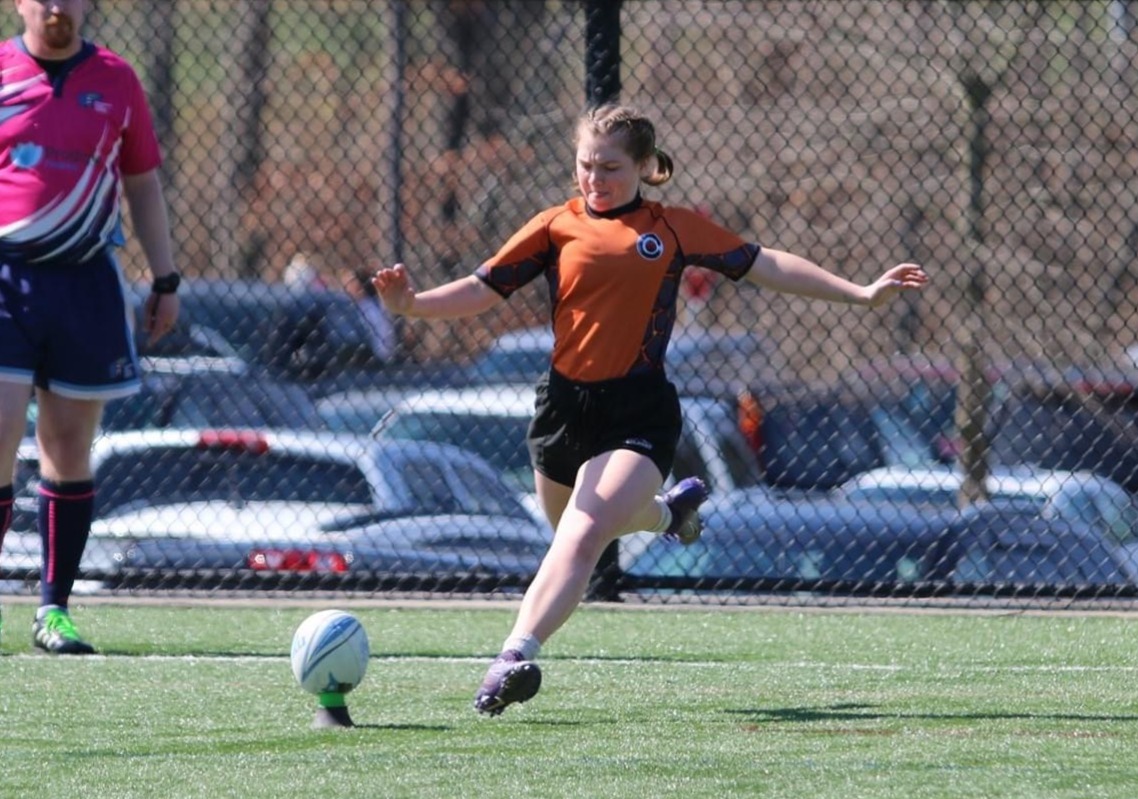
“She’s an amazing flyhalf, and all the girls respect her,” Saxon said. “They voted her as captain and they had my support, which is important, I guess. We let the teams decide, within reason. It’s a partnership; everything is a conversation.”
Cantrell is supported by three key seniors, or assistant captains, who run different segments of the team. Prop Kirsten “Kirby” Butte has been playing since 8th grade and is solid. The Queens University of Charlotte commit runs the front row and second row.
Senior flanker Jessica Gozlan is daughter to middle school coach Dave Gozlan and has been playing since 5th grade. The American International College commit started life as a scrumhalf but then the year she switched to flanker, she was named to the North Carolina Boys’ All-Star Team for the middle schoolers. She’s one of only two girls with that achievement to her credit. She stuck with flanker and runs the Tigress loose forwards, which dictate much of the team’s game plan.
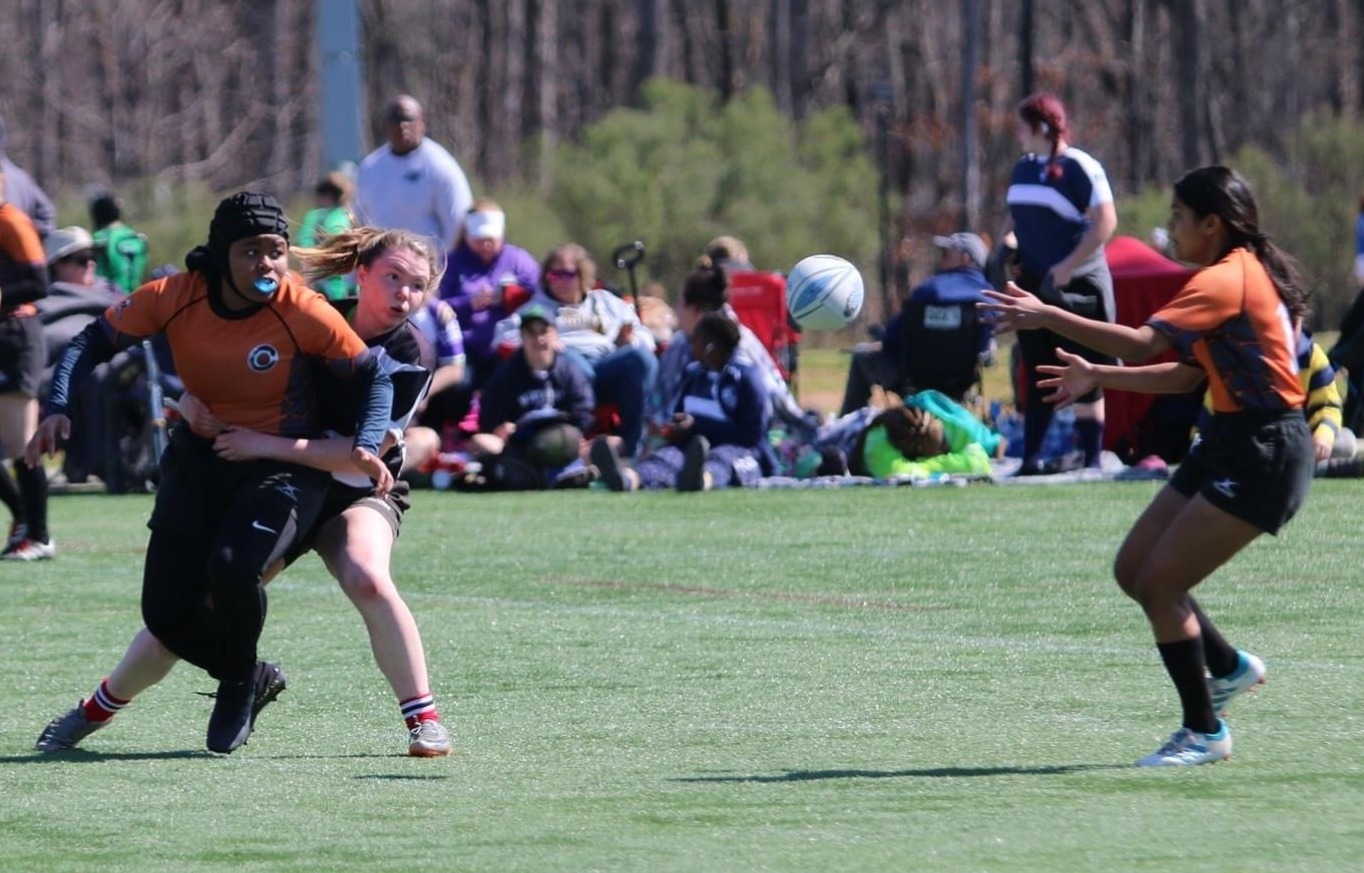
Senior Aleemah Williams is an inside center but can also play flyhalf and fullback. She’s a utility back but is best suited for 12. Tigress likes running a split attack, and Cantrell and Williams do an excellent job of deploying a dynamic attack that is tough on defenses. Williams is heading to Dartmouth College in fall 2020. All three assistant captains are heading the NCAA varsity programs that compete in NIRA.
As far as Covid-19 interruptions go, Tigress was lucky in that it was able to play a lot of good rugby before the shutdown. The middle schoolers and single-school boys were able to complete their full seasons. Boys high schoolers have separate, back-to-back seasons for its single school and club teams. The former play from November-February, and then the latter picks up in March. It’s a set-up the girls hope to follow in 2020-21, but it means that the boys’ high school club season began and ended with the Carolina Ruggerfest (March 7-8).
For the girls, the tournament capped the regular season and served as a buffer before playoffs. Tigress beat Hudson (Ohio) 45-0, Brunswick 21-12 (Ohio), Badgers Select Academy (Wisc.) 47-0 and Central Columbia (Tenn.) 38-0.
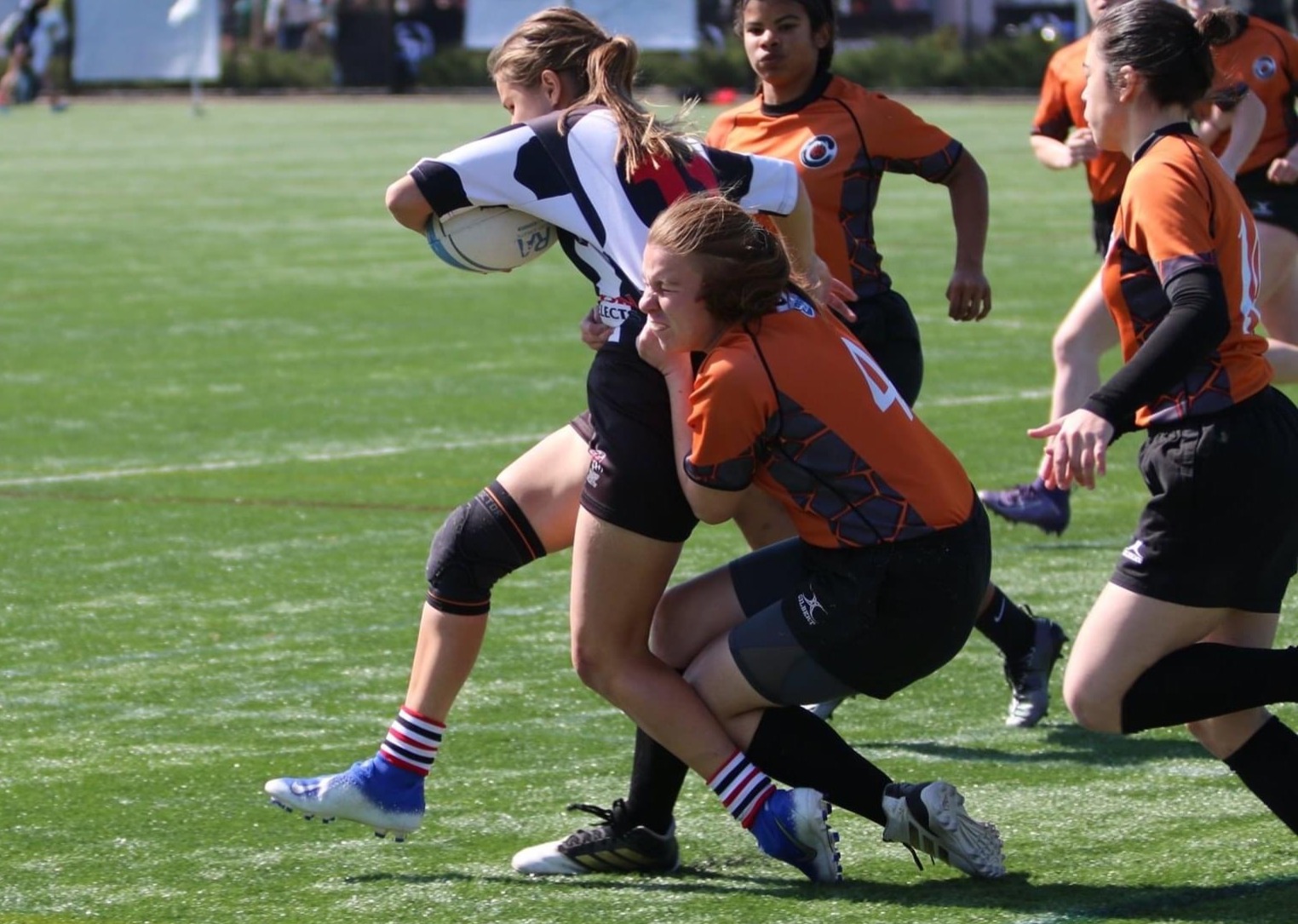
“For the other teams it was a surprise, but not for us,” Saxon said of the dominating performance. “We’re on an island here in the southeast. Teams that come from areas with a longer tradition for rugby haven’t heard of us, so they come here, or we go there, and they expect to walk over a ‘new’ team. But we’re not new. We haven’t spent the money for the girls to go to nationals – yet – and next year will be our first year.”
Ruggerfest was also a stage for the up-and-coming 8th graders. The league rules dictate that an 8th grader who turns 15 years old during the season can play up with the high school team. There are three girls who fit that criteria: Caroline “Cookie” Cook, Gabriela Alegria and Kaitlyn England. Their middle school coaches had been advocating for their promotion to the high school team, but Tigress had plenty of players and Saxon pushed back. When the middle school season ended, the three 8th graders got a little time with the high schoolers, and then more substantial time at Ruggerfest.
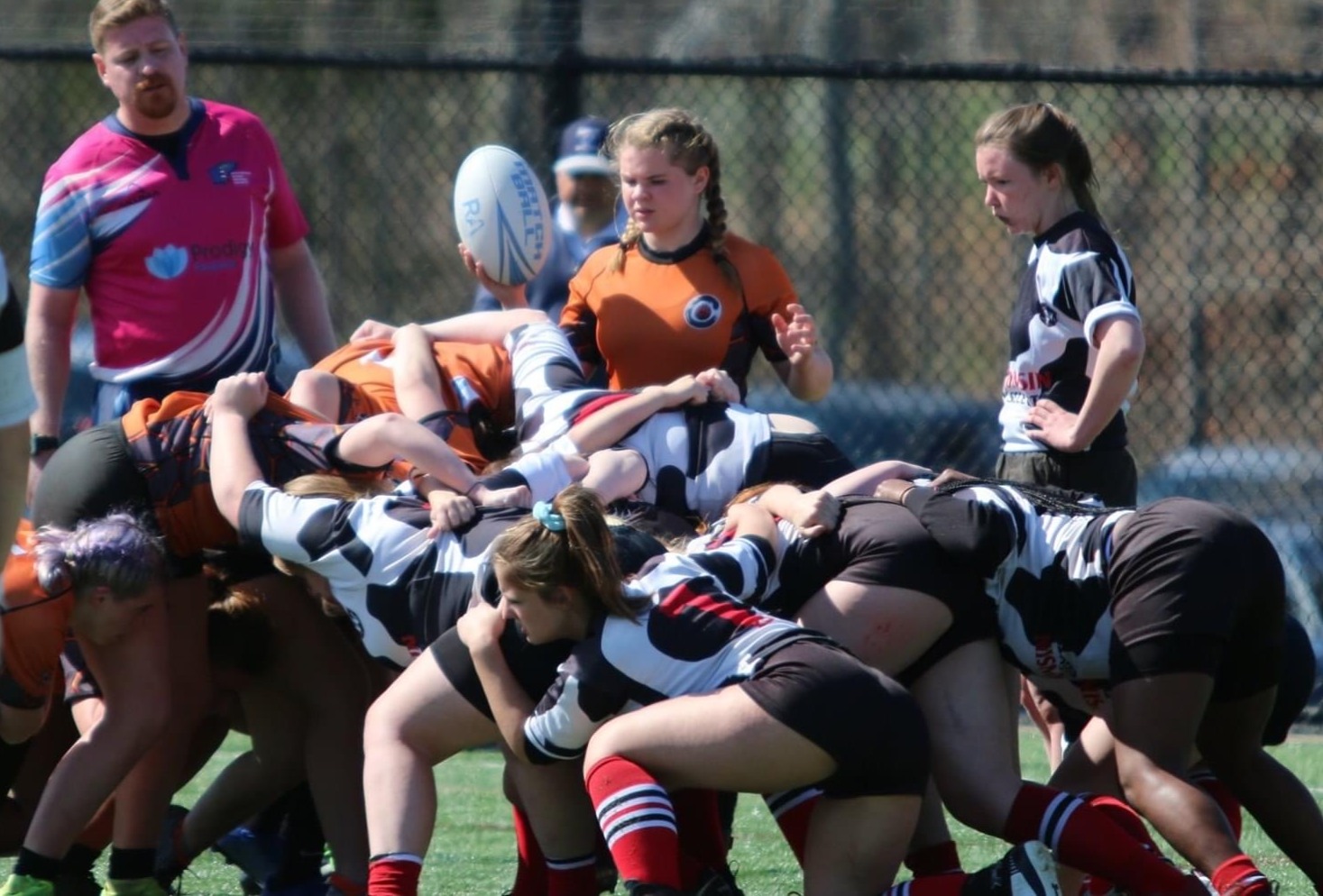
“I told them that if we were up by three tries then I’d put them on in the second half,” Saxon said. “They lit it up. They scored six tries between the three of them. The older girls welcomed them and cheered for them, and that was that.”
Cook is a scrumhalf who passes off both hands, kicks, and “runs and tackles like a flanker – my kind of nine,” Saxon said. “She’s going to be outstanding.”
Alegria is a fast wing, makes her tackles, and holds the sideline well.
“I can move her in [toward the centers] at any time and there’s no drop-off,” Saxon said. “Some people put someone on the wing because they’re fast but don’t have great skills. I put her there because I want her there.”
England is the prototype fullback.
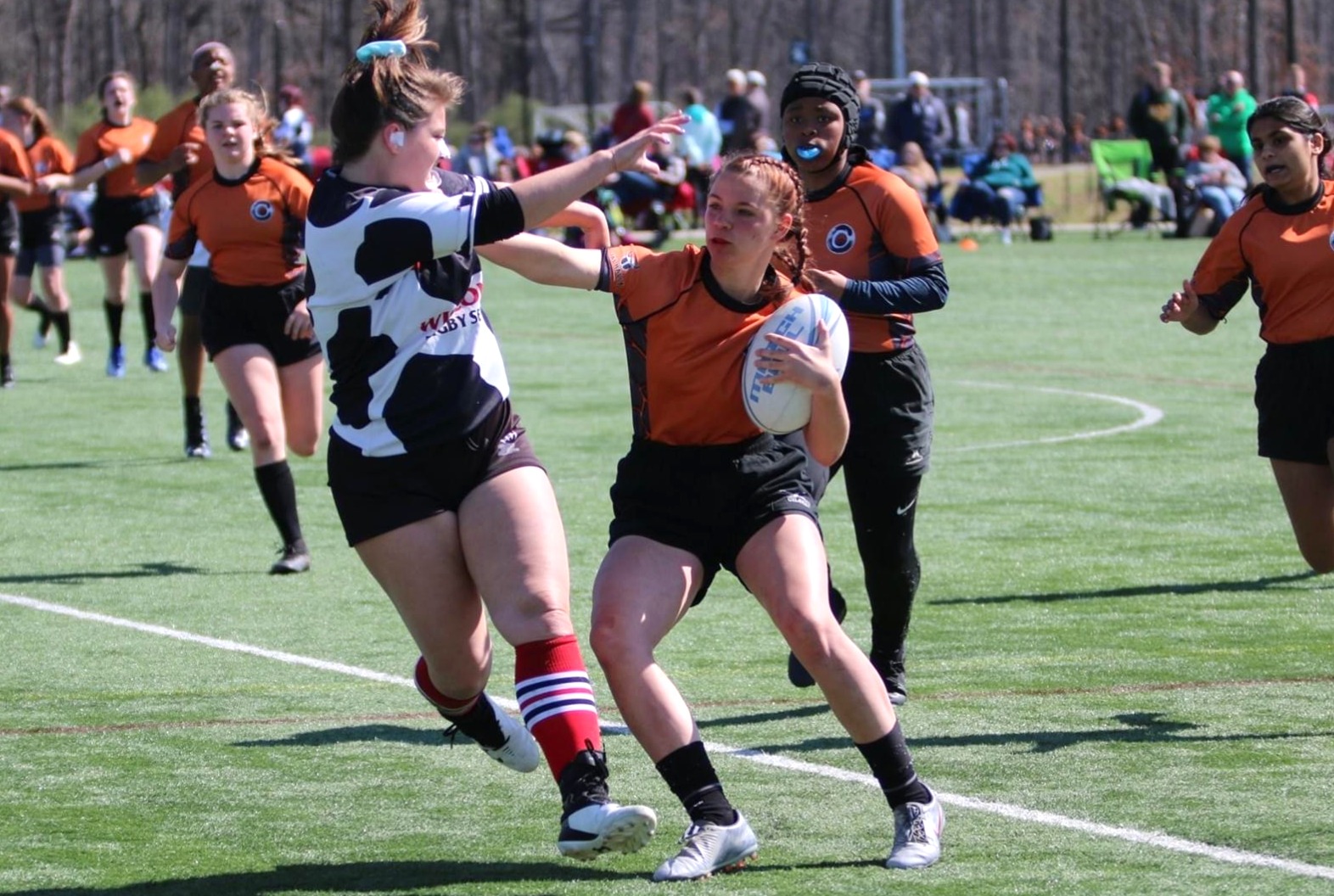
“She’s tall, fast, solid, great ball skills in the air, and on defense always in position,” Saxon said. “No one’s going to kick over us and find us out of position. On attack, she blends in seamlessly, and her support lines are fantastic.”
Ruggerfest drew scouts from 20 universities, and that figure only lists teams that registered their recruiters. Scouts marveled at the 8th graders, players were named to select sides heading to Tropical 7s or NAI 7s, and the Girls High School All-American (now USA U18) reps invited players to camp.
“The cat is out of the bag, which is good,” Saxon said of the southeastern island. “[The girls] were just overlooked. We didn’t have scouts or ID camps until last year. The boys developed that the last 3-4 years. But at our top level, boys and girls, all of the seniors who want to play at college are getting offers, in varying degrees.”
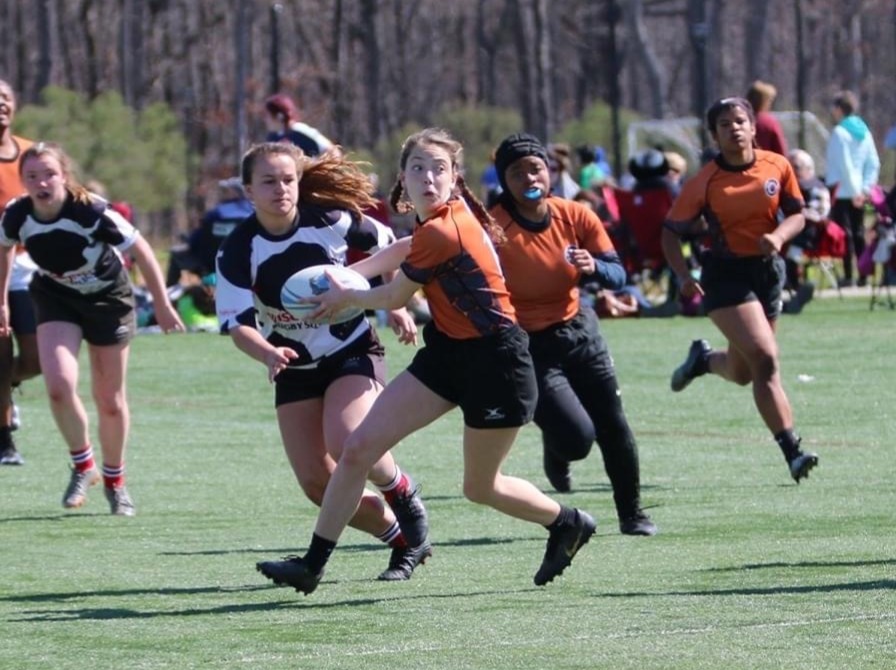
Although rugby does not yet have a return date, there is a chance that the MSIRL high school final four might still happen. The semifinalists agreed that if it made sense and everyone had their players, then the playoffs could pick up later in the summer. Tigress is hopeful, especially since it feels like their year. In 2019, the team lost to a senior-heavy Hough, which is also a CJRA team, by two points in the league final.
“Last year was an embarrassment of riches,” Saxon said. “Both teams were undefeated heading into the final, and it was a barn burner. That was a new experience for me.
“These girls play all-stars together and they’re all friends,” the DOR continued. “We have an open-practice policy so sometimes Hough is at our practices and vice versa, depending on the day. Same with North Meck and Olympic. So if someone’s going to beat you, you’d rather it be your friends. Everyone wants to see the organization do well, so it was bittersweet.”

CJRA DOR Erik Saxon
Further into the future, CJRA would like to keep adding single-school teams; in fact, there’s a waiting list to get rugby programs up and running. Saxon indicated that the interest is there – schools like offering another athletic option and they like rugby – but that finding coaches is the barrier.
“Head coaches are like gold,” Saxon said. “But for us, it’s about finding the right coach. They can’t just run a good practice but have to be able to run a program – good with the kids, parents, school administration, other coaches. That part is the hardest for us.”
CJRA is looking for the right holistic choice, a guiding principle for an organization that is driving the standard and popularity of the sport in and around Charlotte.


